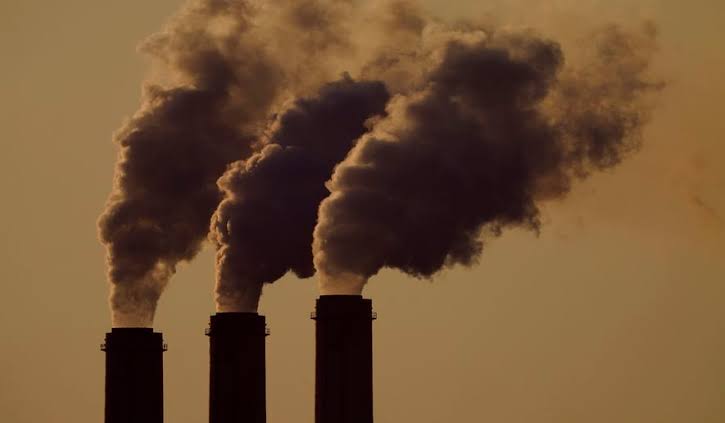Greenhouse gas concentrations hit a new record high last year and increased at a faster rate than the annual average for the last decade, despite a temporary reduction during pandemic lockdowns, the World Meteorological Organization (WMO) said in a report published Monday.
The burning of Coal, Oil and Gas is the biggest source of CO2, which is the cause of 66% of global heating. CO2 emissions fell by about 5% in 2020 due to Covid restrictions, compared to 2019. But many billions of tonnes of CO2 were still pumped into the atmosphere, meaning the Covid economic slowdown “did not have any discernible impact on the atmospheric levels of greenhouse gases (GHG) and their growth rates”, the WMO said.
The concentration of carbon dioxide, the most important greenhouse gas, is now 50% higher than before the Industrial Revolution sparked the mass burning of fossil fuels. Methane levels have more than doubled since 1750. All key GHG rose faster in 2020 than the average for the previous decade and this trend has continued in 2021, the WMO report found.
The report said concentrations of carbon dioxide, methane and nitrous oxide – the gases that are warming the planet and triggering extreme weather events like heatwaves and intense rainfall – were all above levels in the pre-industrial era before 1750, when human activities “started disrupting Earth’s natural equilibrium”.
WMO Secretary-General, Petteri Taalas warned the current rate of increase in heat-trapping gases would result in temperature rises “far in excess” of 1.5C (2.7F) above the pre-industrial average this century – the target set out by in the landmark 2015 Paris climate agreement.
“We are way off track,” Taalas said.
“We need to revisit our industrial, energy and transport systems and whole way of life,” he added, before calling for a “dramatic increase” in commitments at the upcoming COP26 UN climate change conference in Glasgow, Scotland.
Many Environmental Activists, Policymakers and Scientists say the October 31-November 12 event marks an important and even crucial opportunity for concrete commitments to the targets set out in the 2015 Paris climate accord.
Representatives from nearly 200 countries will attend the summit.
The negotiators at the summit must deliver action to keep alive the goal of ending GHG emissions by 2050 and avoiding the worst climate impacts. Only stopping emissions will stabilise the levels of the gases and halt the temperature rises that drive the increasing damage from heatwaves, floods and droughts.
“At the current rate of increase in GHG concentrations, we will see a temperature increase by the end of this century far in excess of the Paris Agreement targets of 1.5C to 2C,” said Taalas. “[Rising levels of GHGs] have major negative repercussions for our daily lives and wellbeing, and for the future of our children and grandchildren.”
“It is hoped Cop26 will see a dramatic increase in commitments,” he said. “We need to transform our commitment into action that will have an impact on GHGs. We need to revisit our industrial, energy and transport systems and whole way of life – the needed changes are economically affordable and technically possible. There is no time to lose.”








